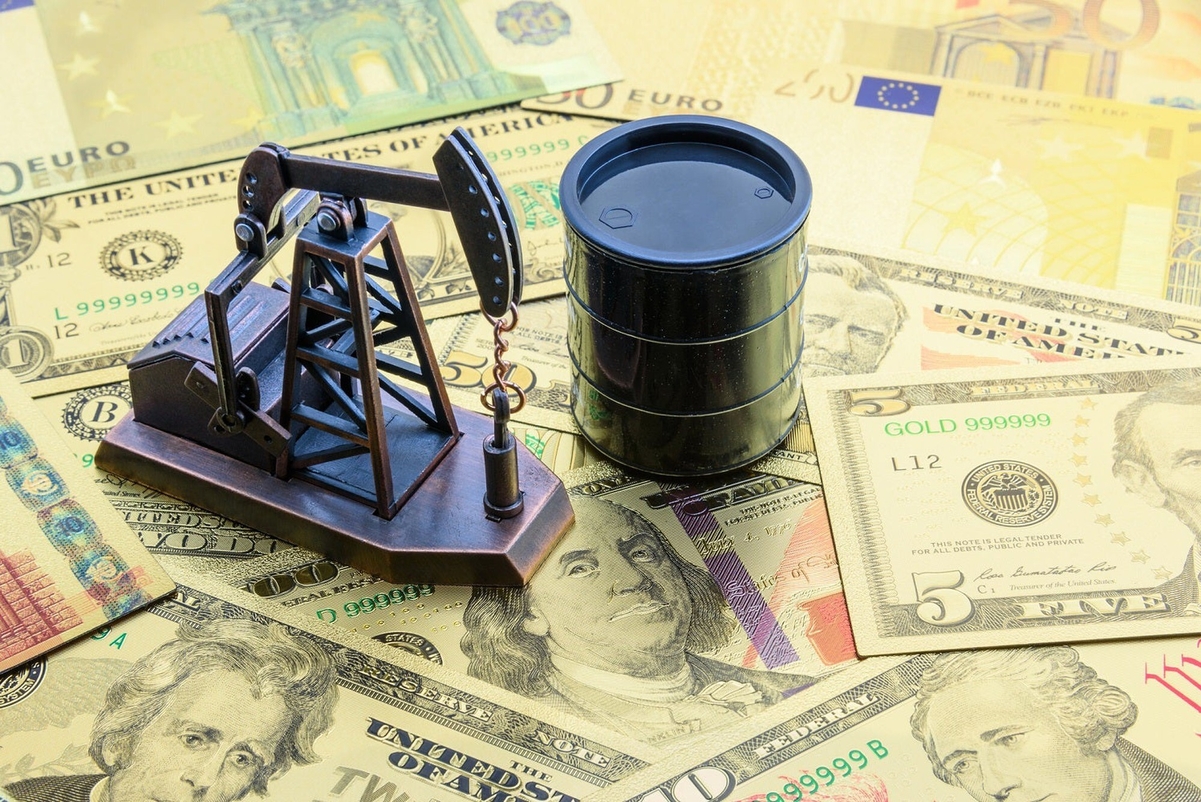Challenging industry conditions persisted during the fourth quarter, after the price of crude slumped 17%. However, despite weakening oil prices, Devon Energy (DVN +0.64%) turned in a pretty solid quarter, with its core earnings increasing from the third quarter. That said, the primary factor driving its steady earnings over the past couple of quarters is going away, which is leading to some really big changes for the company in 2016.
Drilling down into the numbers
Devon Energy reported core earnings of $319 million, or $0.77 per share, which was slightly higher than the $316 million, or $0.76 per share, in core earnings the company delivered during the third quarter. Moreover, operating cash flow totaled $1.1 billion during the quarter, which was 12% higher than the fourth quarter of last year, even though the oil price was 42% lower year over year.
Devon Energy achieved this rather remarkable feat thanks to three factors:
- Oil hedges added $11.59 per BOE to the company's realized price during the quarter, boosting it from $17.85 per BOE to $29.59 per BOE.
- Oil production from core assets grew 26% year over year.
- Field-level operating costs dropped 20% year over year to $8.82 per BOE, while G&A costs are down 25% to $3.10 per BOE.
In other words, Devon Energy used a combination of higher volumes, lower costs, and oil and gas hedges to keep its core earnings stable and push its cash flow higher.
Another big stabilizing factor for the company was its investment in EnLink Midstream (NYSE: ENLK), which generated operating profits of $210 million for the quarter. For the full year, EnLink Midstream's operating profits grew by 8% and helped supply Devon Energy with steady cash flow via distributions, as well as a source of cash after Devon sold $761 million worth of EnLink Midstream units last year.
A look at what's ahead
While cost reductions and production growth helped mute some of the impact from lower oil prices in 2015, the company's real saving grace was its oil and gas hedges. If it wasn't for those hedges, the company's cash flow would have been substantially lower. In fact, cash settlements from oil and gas hedges increased the company's revenue by more than $700 million last quarter. However, the company's hedges wound down at the end of the year, which will leave it with much less cash flow in 2016 should oil and gas prices remain at their current levels. As a result, Devon Energy has to make several major changes for the upcoming year.
Topping that list is capital spending, which is expected to drop 75% year over year to a range of $900 million to $1.1 billion. That spending reduction is expected to cause the company's overall production from core assets to drop by 6% at the midpoint of its guidance, while oil production from core assets is expected to drop 3%. That's a huge change from last year, when the company pushed oil production at its core assets higher by 26%.
In addition, Devon Energy is reducing its quarterly dividend by 75% to $0.06 per share, which will free up $320 million in cash flow on an annualized basis. The combination of reducing its dividend and capex spending will enable the company to live within its cash flow next year, should oil and gas prices remain where they are right now. That said, if prices continue to weaken, Devon Energy has the flexibility to reduce both its capex and its dividend to operate within cash flow.
Devon Energy's top priority in 2016 is to protect its balance sheet, and living within cash flow is key piece to that puzzle. However, another important part of that plan is asset sales, with Devon Energy planning to sell $2 billion to $3 billion in non-core oil and gas properties as well as its 50% stake in the Access pipeline. Those asset sales are expected to not only bolster its balance sheet, but also pare Devon's portfolio down to what it's now calling its core assets, which is the foundation of the company going forward and consists of its heavy oil assets in Canada, its Rockies oil assets, the STACK play, the Delaware Basin, the Eagle Ford Shale, and the Barnett Shale. Those are its lowest-cost, highest-return assets, as well as those with the best opportunities to generate strong growth when conditions improve.
Investor takeaway
Devon Energy ended 2015 on a solid note, delivering steady core earnings and cash flow thanks to higher volumes, lower costs, and strong oil hedges. But those oil hedges are going away and taking with them a big portion of Devon's cash flow and, therefore, its ability to grow its production. As a result, 2016 will be a year focused on protecting the balance sheet so the company can live to fight another day.






